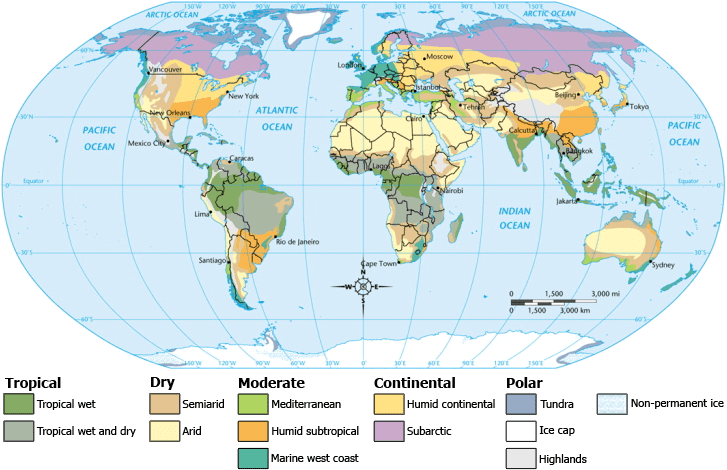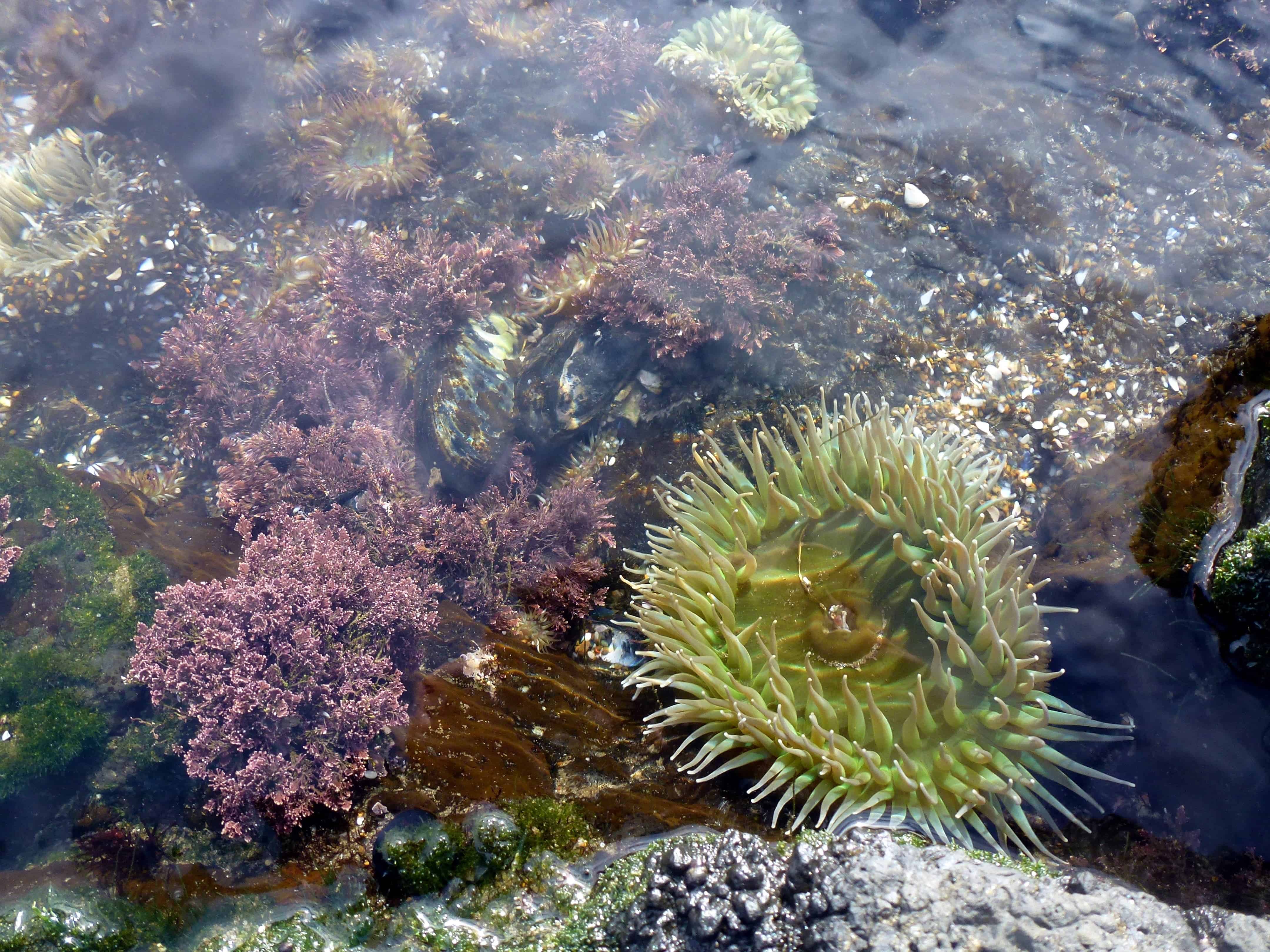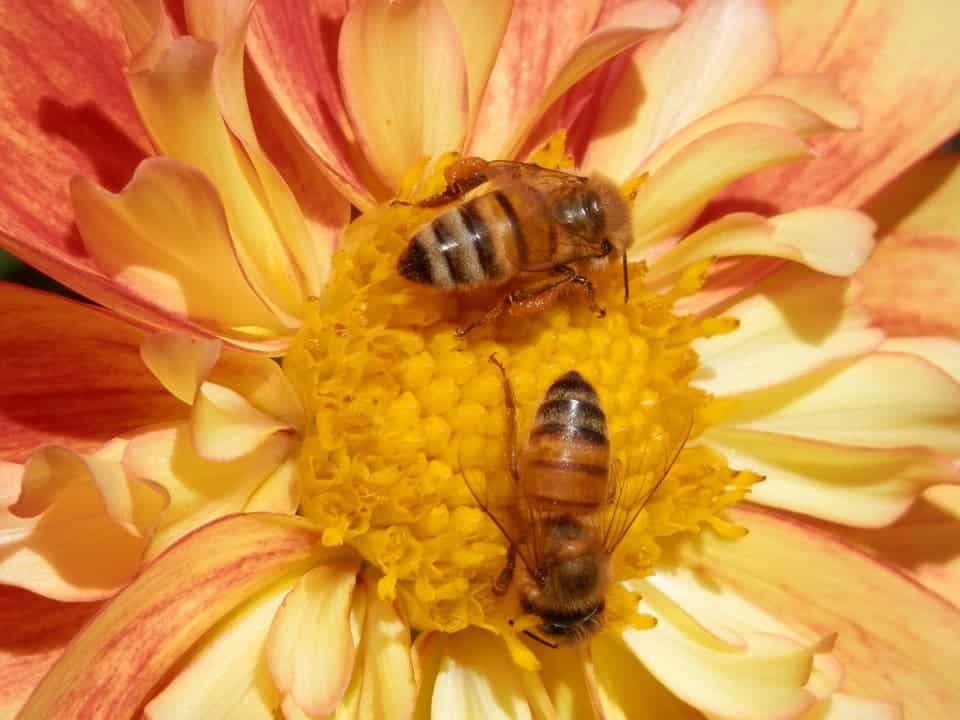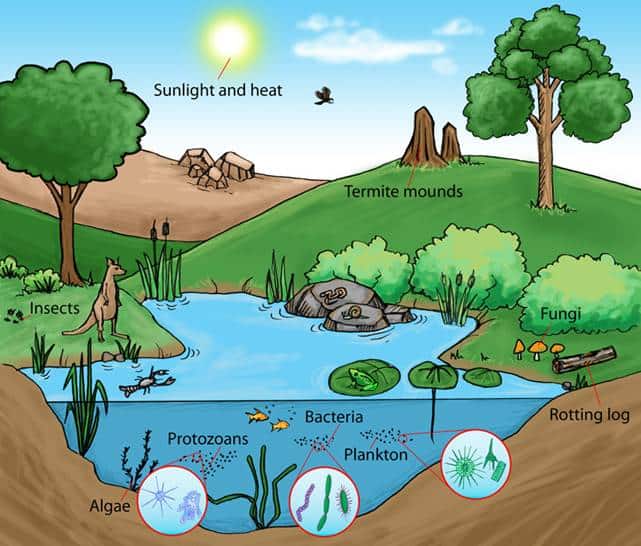From the lush rainforests of the Amazon to the frozen tundra of Antarctica, each ecosystem is unique and plays a critical role in maintaining the balance of life on our planet. Ecosystems are essentially complex networks that include both the environment and the creatures that inhabit the environment, each playing a role that helps to maintain equilibrium in the ecosystem.
There are multiple types of ecosystems, depending on how you classify them, but at the heart of every ecosystem is the flow of energy. Starting with the sun, which provides energy for plants through photosynthesis, and moving up the food chain, ecosystems are defined by energy and balance.
But the diverse array of ecosystems on Earth isn’t always in balance — and human activity is a big part of that. But before we get into that, let’s learn a bit more about what ecosystems are and what different types of ecosystems are like.
An ecosystem is a little bubble of life made up of living and nonliving components. Image credits: Tsilia yotova.
The Earth has a wide variety of diverse ecosystems that keep nature in balance and keep the biological world flowing. While most of us are familiar with the term “ecosystem”, a lot of people may be unsure about what that term actually means. And that’s understandable — several different definitions are often used for the same term.
However, the best all-encompassing definition for an ecosystem is all of the living organisms (plants, animals, and bacteria) and the nonliving components (air, water, soil, weather) that interact with each other as a system. Essentially, it’s an ecological system.
The ecosystems on Earth are essential for life as we know it.
“The ecosystem concept is essential to the examination of human impacts on life on Earth. It provides a way of looking at the functional interactions between life and the environment which helps us to understand the behavior of ecological systems, and predict their response to human or natural environmental changes,” write Gordon Dickinson and Kevin Murphy, two experts on ecosystems.
Ecosystem characteristics
The size of an ecosystem can range from a small tide pool to a giant desert. All the members of the system are interconnected, so the loss or change of one factor can have large effects rippling through the entire ecosystem.
Remarkably, it’s only recently that all ecosystems on Earth were truly classified.
“For the first time, we have a common platform that identifies, defines and describes the full suite of the whole planet’s ecosystems,” said Professor Keith, who studies ecosystems.
“It may seem rather odd that we haven’t had this before, but historically scientists have forged advances by working somewhat separately in marine, freshwater and terrestrial ecosystems. This is the first time that all of this detailed knowledge has been brought together into a single framework taking advantage of common theory across the disciplines.”
An ecosystem is defined as such because the species that interact form a network that depends on the environment. So a forest, such as the Amazon rainforest, can host many different ecosystems: a soil ecosystem, an understory ecosystem, a canopy, and a forest floor ecosystem. All the members of each system interact with one another and form a closed system.
Ecosystems are often a part of a larger biome, which should not be confused with an ecosystem: biomes are large areas of land (or sea) based broadly on climate type and the species present. They are not based on the interactions between living and nonliving parts of a system.
The external and internal factors of ecosystems
Internal ecosystem factors include all elements and processes that exist within the ecosystem — things like the type of species present in the ecosystems. Meanwhile, external ecosystem factors include light, radiation, temperature, water, chemicals, gases, wind, and soil.
Energy enters an ecosystem from the sun, which plants utilize, as well as carbon dioxide, which is used for photosynthesis. Animals eat plants, moving energy and matter through the ecosystem, up the food chain. When organic matter dies, decomposers break it down, releasing carbon dioxide back into the atmosphere — these are the internal ecosystem factors and processes.
Meanwhile, larger external factors determine an ecosystem’s climate, time, topography, and material at the earth’s surface — these factors are not influenced by the ecosystem itself; they simply exist. Rainfall and temperature determine the amount of water and energy available to a system. Climate determines what sort of biome an ecosystem is in — these factors make one region a desert, another one fertile land, and another one a lake.

Internal factors change how different species interact with each other. For example, if one species contracts a disease and dies off, it affects the whole system. These factors both control and are controlled by ecosystem interactions.
The types of ecosystems
There are many different types of ecosystems, each with its own unique characteristics and inhabitants — and there are several ways to classify them. For instance, you can have aquatic or terrestrial ecosystems (or semi-aquatic ecosystems), or you can split them by climate (temperate ecosystems, tropical ecosystems, etc).
A coral reef, for instance, could be defined by warm, shallow waters along coastlines, and species like fish, turtles, and sharks. The tundra is another type of ecosystem, characterized by its cold climate, short growing season, and lack of trees. This ecosystem is home to a variety of hardy plants and animals, including caribou, musk oxen, and arctic foxes.

Ecosystems are dynamic: they can change based on external or internal factors. The variation in climate can cause situations such as droughts, where all but the most resistant plants die. The animals and microorganisms that depend on these plants would also be affected. New species sometimes also arrive. For example, a new bird that eats a certain insect can come to an area. That insect will now be less abundant and affect the plants that it used to feed upon as well as the other animals that eat this plant. The animals and plants that live in an ecosystem are perfectly suited to these particular living conditions. Changes in external factors, like temperature, can change the plants grow and, therefore, the animals that eat the plants might adapt, move, or die in response.
Ecosystem services
The normal functioning of an ecosystem provides humans with an abundance of services that we depend upon or that can significantly improve our quality of life. For example, pollination is necessary for about 75% of our crops, trees provide us with timber, and the oceans provide us with fish. The list of ecosystem-provided services is very, very long and includes several more nuanced entries that we tend to take for granted, like clean air, a stable climate, and safe drinking water.

Ecosystems also provide numerous benefits to humans, from cleaning the air and controlling pests and diseases to providing food, medicine, and other resources. The importance of ecosystems cannot be overstated, as they are the foundation upon which all life on Earth depends. However, human activities such as pollution, habitat destruction, and overharvesting have led to the decline of many ecosystems, putting the balance of life on our planet at risk. Therefore, it is crucial that we take steps to protect and preserve ecosystems for future generations.
Human influence
Humans are having a significant impact on the world’s ecosystems, disrupting a great number of ecosystems — if not all ecosystems on Earth.
For example, by overfishing the oceans, the whole food chain and system are disrupted and can no longer function properly. In addition to causing potential ecosystem collapse, these actions will also come back to bite us, as we’ll run out of certain types of seafood that we enjoy. Introducing invasive species also influences ecosystems because these invasive species outcompete several of the native species that are necessary for the system to work properly.
Another major impact that humans are having on ecosystems is through pollution: many of the chemicals and waste products that we produce are contaminating the air, water, and soil, with devastating effects on the plants and animals that call these ecosystems home. Many species are threatened by the presence of these toxins in their environment, and some are pushed to the brink of extinction — or even beyond it.
This is not only affecting ecosystems themselves, but also reducing the benefits that our society can reap from ecosystems.
“We found that the main ecosystem services are not independent of each other. They interact spatially in very complex ways,” says Jiangxiao Qiu mapped the production, distribution, and interactions of the services, lead author of a new study that analyzed ecosystem services.
“If you manage for one of these services, you can probably enhance others, as well,” says Monica Turner, the Eugene P. Odum Professor of Zoology. “It also means that you can’t take a narrow view of the landscape. You have to consider all of the things that it produces for us and recognize that we have to manage it very holistically.”
On a larger scale, humans are even capable of influencing external factors. Our burning of fossil fuels, deforestation, and other activities are releasing large amounts of greenhouse gases into the atmosphere, which is causing the rise of the planet’s temperature. This in turn influences which plants and animals can live where. It is true that new species often enter ecosystems and that climate can naturally fluctuate but the current changes are so frequent and sudden that the ecosystems cannot adapt to the new equilibrium. We are also shooting ourselves in the foot because disrupting ecosystems could have disastrous effects on our very own society: no pollination and hence few crops, bad air quality, fewer fish, and contaminated water are just a few examples. Even if we don’t care about ecosystems and plans and animals (which is a very dangerous thing) — maintaining the balance of the ecosystem benefits us personally.
In conclusion, ecosystems are the building blocks of the natural world, and they come in a great deal of shapes and sizes. But they’re also vulnerable, and humans are having a significant impact on the world’s ecosystems. Our actions are altering the balance of life on Earth and putting the health of our planet at risk. It’s crucial that we take steps to reduce our impact and protect the ecosystems that sustain us. This can be done by promoting sustainable development, reducing pollution, and protecting natural habitats.



